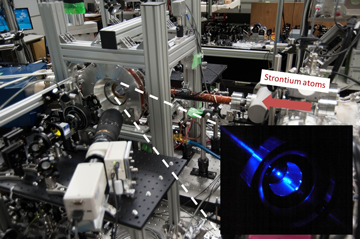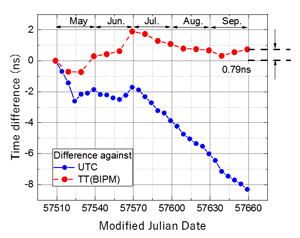Months-long Real-time Generation of a Time Scale Based on an Optical Clock
March 20, 2018
National Institute of Information and Communications Technology
Abstract
Background

Achievements

[Click picture to enlarge]
Future Prospects
Publication information
Technical Contact
Tetsuya Ido
Space-Time Standards Laboratory
Applied Electromagnetic Research Institute
Tel: +81-42-327-6527
E-mail:































Media Contact
Sachiko Hirota
Press Office
Public Relations Department
Tel: +81-42-327-6923
E-mail:





















